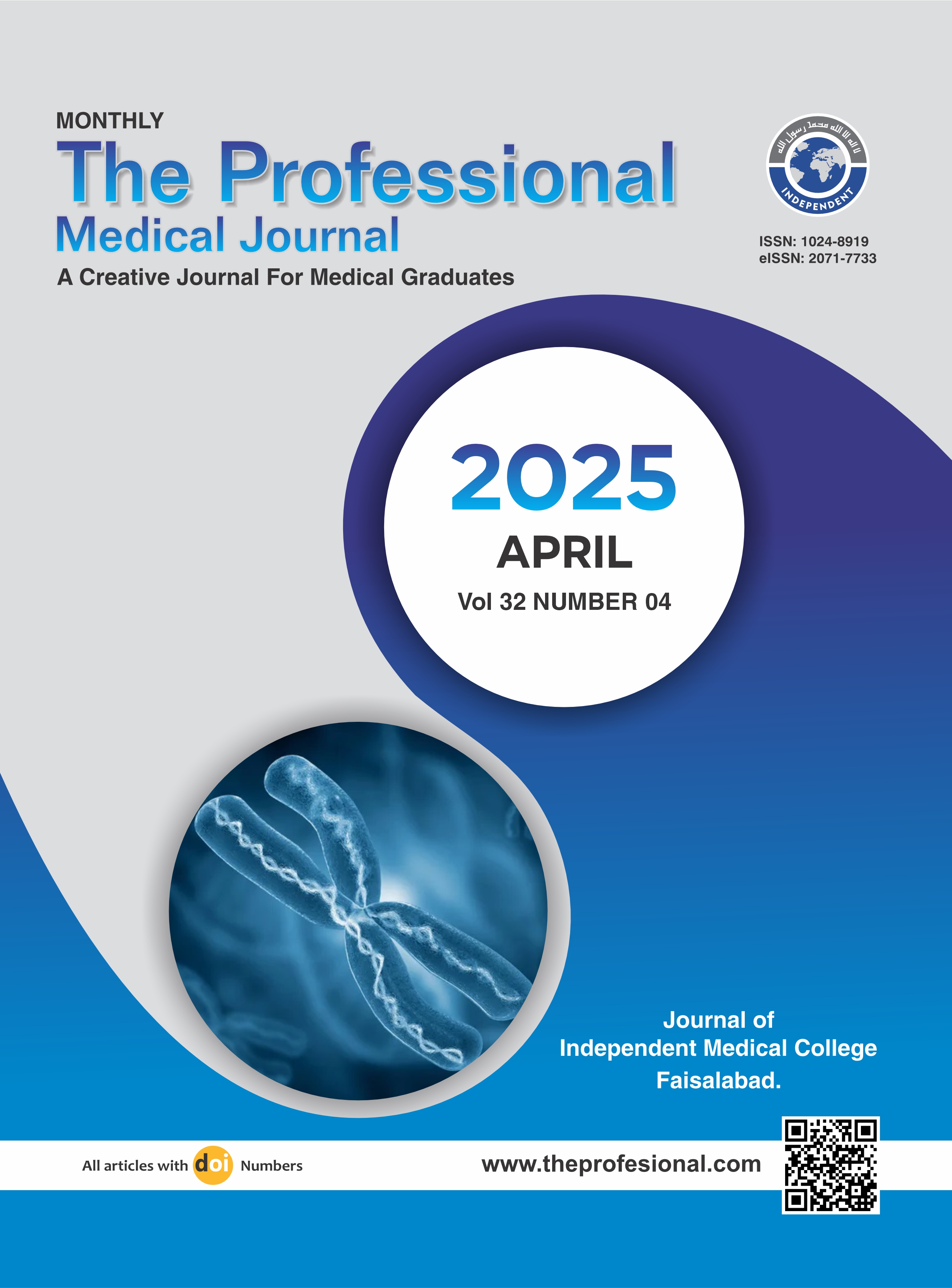Functional outcome of lumbar discectomy by fenestration technique in lumbar disc prolapse.
DOI:
https://doi.org/10.29309/TPMJ/2025.32.04.8584Keywords:
Lumbar Disc Prolapse, Lumbar Discectomy, Neurological Symptoms, Spinal Deformity, Spinal SurgeryAbstract
Objective: To evaluate the functional recovery, particularly in in terms of pain relief and resuming work, in patients with lumbar disc prolapse treated with the fenestration technique. Study Design: Prospective study. Setting: Doctors Hospital and Medical Center, Lahore, Pakistan. Period: 1st April 2024 and 30th September 2024. Methods: A total of 50 patients with clinical signs of lumbar intervertebral disc prolapse, unresponsive to conservative treatment, underwent fenestration discectomy. Functional outcomes were assessed using the 'Back Pain Functional Score (BPFS) This score is utilized to assess the impact of back pain on a person’s ability to perform daily activities. It evaluates the functional limitations caused by back pain and tracks recovery progress, especially before and after surgical interventions, and the (PROLO): The PROLO system assesses recovery by focusing on two aspects: economic independence and functional ability. Each aspect is rated from 1 to 5, and the combined score helps determine the patient's overall recovery status over time. Rating scale, measuring both preoperative functional and economic status as well as six-month postoperative outcomes. Wadell's score system was employed to differentiate organic from non-organic signs, and surgical success was determined using McNab's criteria. Results: Low back pain is a widespread and disabling condition globally. Sciatica, caused by lumbar disc prolapse, affects approximately 4-6% of the population. Fenestration discectomy, a surgical technique, offers advantages such as reduced operation time, less blood loss, and fewer postoperative complications without compromising spinal stability compared to traditional laminectomy. At the six-month follow-up, 42 patients (84%) showed good outcomes, and 8 patients (16%) had fair outcomes according to BPFS and PROLO scales, with no cases classified as poor. The PROLO scale also revealed that 84% of patients resumed their prior occupations, while 76% reported complete pain relief. Statistical analysis demonstrated a significant association between functional outcomes and both patient age (p=0.089) and duration of symptoms (p=0.098), with younger patients (below 30) and those with symptoms lasting less than six months exhibiting better recovery. Conclusion: The fenestration technique proved effective in managing lumbar disc prolapse, showing significant improvements in terms of pain relief and return to work at six months post-surgery. Factors such as older age, prolonged symptom duration, and psychological issues were associated with poorer functional outcomes.
Downloads
Published
Issue
Section
License
Copyright (c) 2025 The Professional Medical Journal

This work is licensed under a Creative Commons Attribution-NonCommercial 4.0 International License.


